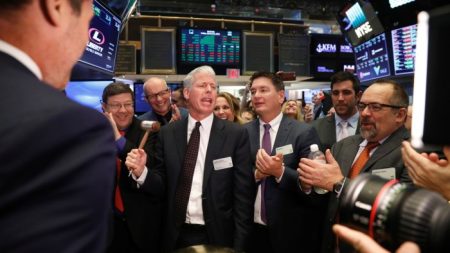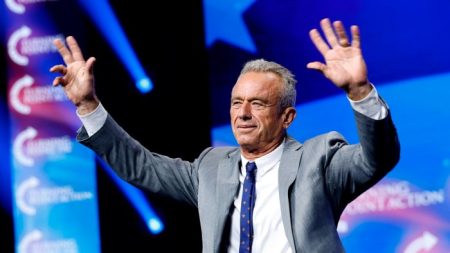Unlock the Editor’s Digest for free
Roula Khalaf, Editor of the FT, selects her favourite stories in this weekly newsletter.
The US economy added 353,000 jobs in January, almost twice as many than forecast, in “stunning” figures that led investors to slash expectations for a March interest rate cut.
Economists had expected a 180,000 jobs increase for last month, according to an LSEG survey.
Tom Simons, US economist at Jefferies, described the figures as “stunning numbers” that left him “near speechless”.
After their publication, futures traders scaled back bets that the US Federal Reserve would cut interest rates in March. Expectations of a cut fell to about 20 per cent, compared with 37 per cent before the report.
“Barring some kind of exogenous shock, this removes the possibility of a rate cut in March,” said Simons of the labour data. “A cut in March would be unthinkable.”
Traders also scaled back their bets on an interest rate cut in May, putting the odds at around 88 per cent. Before the report, a cut in May had been fully priced in.
Stephen Stanley, chief US economist at Santander, said that although January’s 353,000 jobs figure was “exaggerated by seasonality”, the data was “strong across the board”.
Treasury yields jumped as the markets backtracked on their expectations of early rate cuts.
The two-year Treasury yield, which moves with interest rate expectations, built on earlier gains, rising 0.19 percentage points on the day to 4.38 per cent.
Fed chief Jay Powell sought earlier in the week to cool speculation about a March rate cut, warning that it was not the central bank’s “base case”.
“Powell killed a March cut. The jobs number buried it,” said Robert Tipp, chief investment strategist at PGIM Fixed Income.
The S&P 500 edged up about 0.3 per cent in early trading on Friday as a surge in tech stocks helped the market shrug off the change in interest rate expectations.
Meta shares climbed 20 per cent higher after the tech giant’s fourth-quarter sales and outlook exceeded forecasts, alongside the surprise introduction of its first-ever quarterly dividend. Amazon rose 6.9 per cent in early trade.
Friday’s jobs report by the Bureau of Labor Statistics also showed that US workers’ average hourly wages grew 0.6 per cent to $34.55 — up 4.5 per cent over the past 12 months.
Revised figures in the report indicated that the US had added 333,000 jobs in December, up from a first estimate of 216,000. The figure for November was also upgraded, by a more moderate 9,000 to 182,000.
Some economists suggested that the dramatic gains in January’s jobs figures — a phenomenon that also occurred last year — may have been exaggerated by seasonal hiring.
The seasonal adjustment methodology “has not caught up with the patterns in the real economy”, said Eric Winograd, senior economist for fixed income at AllianceBernstein.
Until now, the Fed had been encouraged by signs that the labour market was cooling down.
Referring to this week’s Employment Cost Index figures, which indicated wage rises were moderating, Powell said on Wednesday that the US was “still a good labour market for wages and for finding a job, but [was] getting back into balance and that’s what we want to see”.
Read the full article here














